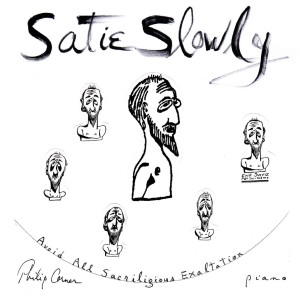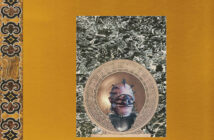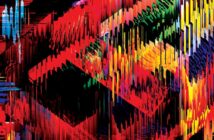Marketed like Lubomyr Melnyk in reverse, Satie Slowly finds American composer-pianist put the brakes on Erik Satie with a reading that, in many ways, recalls Glenn Gould’s latter take on the Goldberg Variations. Corner discovered the “secret genius” of Satie when he participated with Cage in his famous tag-team performance of Vexations, and here he performs works from Satie’s most popular early period, including the Gymnopedies, a Gnossienne, and a selection of religious pieces.
Since Cage declared Satie “indispensable” and the increasing ubiquity of music as furniture, Satie’s reputation has steadily grown, and Corner’s performance, along with accompanying rhetoric, brings a fresh relevance and viscerality. Off the bat, while Satie Slowly certainly contains the slowest version of the First Gnossienne (at 10+ minutes versus a standard 3-4), it is not quite the “none slower” performance Satie aficionados might expect. Ulrich Gumpert issued a similarly slow-pitched Satie album back in 1995, performing much of the same material (Gothic Dances and Preludes du Nazarene), and some of Reinbert De Leuuw’s recordings for Phillips, particularly the Gymnopedies, creep slower than Corner’s. Nonetheless, there’s nothing remotely fast here, and beyond tempo, Corner’s ‘slow’ takes in all that that adverb positively connotes: contemplation, concentration, restraint and, behind the scenes, studious rigour.
Thus, in the Ogives, one of Satie’s earliest and most reduced (and frequently irritating) works, Corner has the cold stone monoliths (they’re also Satie’s most overtly Gothic pieces) titter and blush, showing a tender, and usually guarded, sensitivity. As the modal patterns expand and gain weight, they are disarmed by Corner’s understanding of the music’s harmonic possibilities. The three Fanfares of the Rose and Cross, written during Satie’s brief association with Joseph Peladan’s Rosicrucian movement (before breaking off to form his own religious order), are constructed from similar resources, only more circuitous. They’re plodding at the best of times, and Corner ambles blissfully, finding profundity in these wilfully directionless cul-de-sacs.
It’s the First Gnossienne however that is the signature piece here, Corner crushing the music into discreet fragments, pulling rich hiss and echo from the piano’s insides. Through repetition the music loses rather than gains familiarity, each cycle revealing new and unusual shadings, notes gaining an independence like in Webern or Feldman. In its latter stages Corner lays down some heavy chords, amplified by the mass of surrounding blank space, a priority for Corner as much as the notes themselves. Satie wrote six more Gnossiennes, which by my count allows for another full-length LP from Corner.




